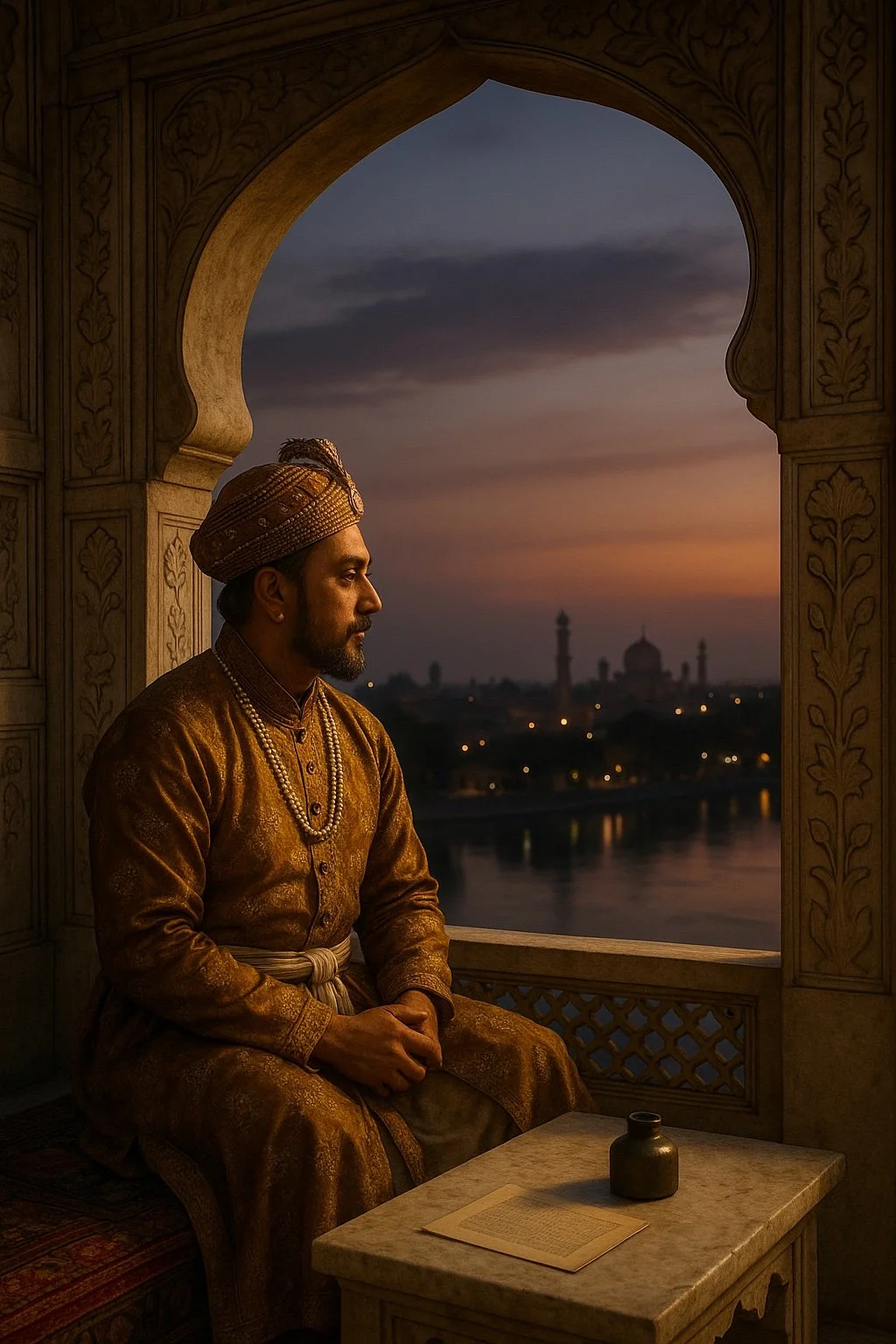JAHANGIR
WHO WAS JAHANGIR?
Jahangir, born as Prince Nur-ud-Din Muhammad Salim in 1569, was the fourth emperor of the Mughal dynasty and the eldest son of Emperor Akbar. Jahangir ruled the Mughal Empire for a period of 21 years and 11 months (1605 to 1627). While his reign was marked by relative stability and cultural achievements, it was also a time of political intrigue, military challenges, and significant developments in Punjab.
EARLY LIFE: GROWING UP IN AN EMPIRE
Prince Salim grew up under the shadow of his father, Akbar, who established the Mughal Empire’s dominance in the Indian subcontinent. Salim’s upbringing was shaped by his father’s vision of empire-building.
From a young age, Salim was exposed to both the luxuries and the responsibilities of royal life. However, his relationship with Akbar was strained at times due to Salim’s impatience for power. Before ascending to the throne, he rebelled against his father, declaring himself emperor in 1600. Despite this, Akbar eventually forgave him, and Salim succeeded as emperor after Akbar’s death in 1605, taking the regnal name Jahangir - Seizer of the World.
JAHANGIR’S REIGN: ART, CULTURE, AND JUSTICE
Jahangir’s reign is remembered for its patronage of the arts and his dedication to justice. He established a Chain of Justice at his palace, allowing subjects to seek his intervention directly if they felt wronged. Under his rule, Mughal paintings flourished, blending Persian, Indian, and European styles to create intricate works of art.
However, Jahangir’s rule was not without challenges. He faced several rebellions, including one led by his own son, Prince Khusrau. Jahangir’s response to dissent was often severe, showcasing his determination to maintain control. His reliance on powerful nobles and his wife, Nur Jahan, in state affairs became a hallmark of his reign. Nur Jahan, in particular, wielded significant influence, shaping policies and acting as a co-sovereign in many respects.
JAHANGIR AND PUNJAB
Punjab played a pivotal role during Jahangir’s reign. The region was both a cultural hub and a site of political unrest. Jahangir’s rule coincided with the growth of Sikhism, founded by Guru Nanak and carried forward by his successors.
One of the most significant events during Jahangir’s reign was the martyrdom of Guru Arjan Dev, the fifth Sikh Guru, in 1606. Jahangir ordered Guru Arjan’s execution, accusing him of supporting Prince Khusrau’s rebellion. This act not only strained relations between the Mughals and the Sikhs but also marked a turning point in Sikh history, leading to increased militarisation under subsequent Gurus.
Economically, Punjab remained an important region for the empire, providing agricultural wealth and serving as a crucial link between Central Asia and the rest of the subcontinent. However, the Mughal administration often imposed heavy taxes, leading to discontent among local communities.
THE COMPLEX LEGACY OF JAHANGIR
Jahangir’s legacy is one of contrasts. On one hand, he is celebrated for his contributions to art, architecture, and the cultural richness of the Mughal court. On the other hand, his reign saw political instability, heavy-handed responses to dissent, and strained relations with emerging powers like the Sikhs.
Jahangir’s love for Punjab’s natural beauty is well-documented in his memoirs. He frequently visited the region and commissioned gardens and monuments, reflecting his appreciation for its landscape. However, his policies and actions also left scars on Punjab, particularly through his dealings with the Sikh community and local rulers.
In 1627, Jahangir died while returning from a trip to Kashmir and was buried in Lahore, a city that remained close to his heart. His mausoleum stands as a testament to his love for art and architecture, blending Mughal elegance with a touch of Persian influence.
A depiction of Emperor Jahangir looking over the Ravi River at night.
To Jahangir’s pursuit of beauty and power, and to Punjab’s strength through an age of opulence and change.
With respect – TrishSaab.